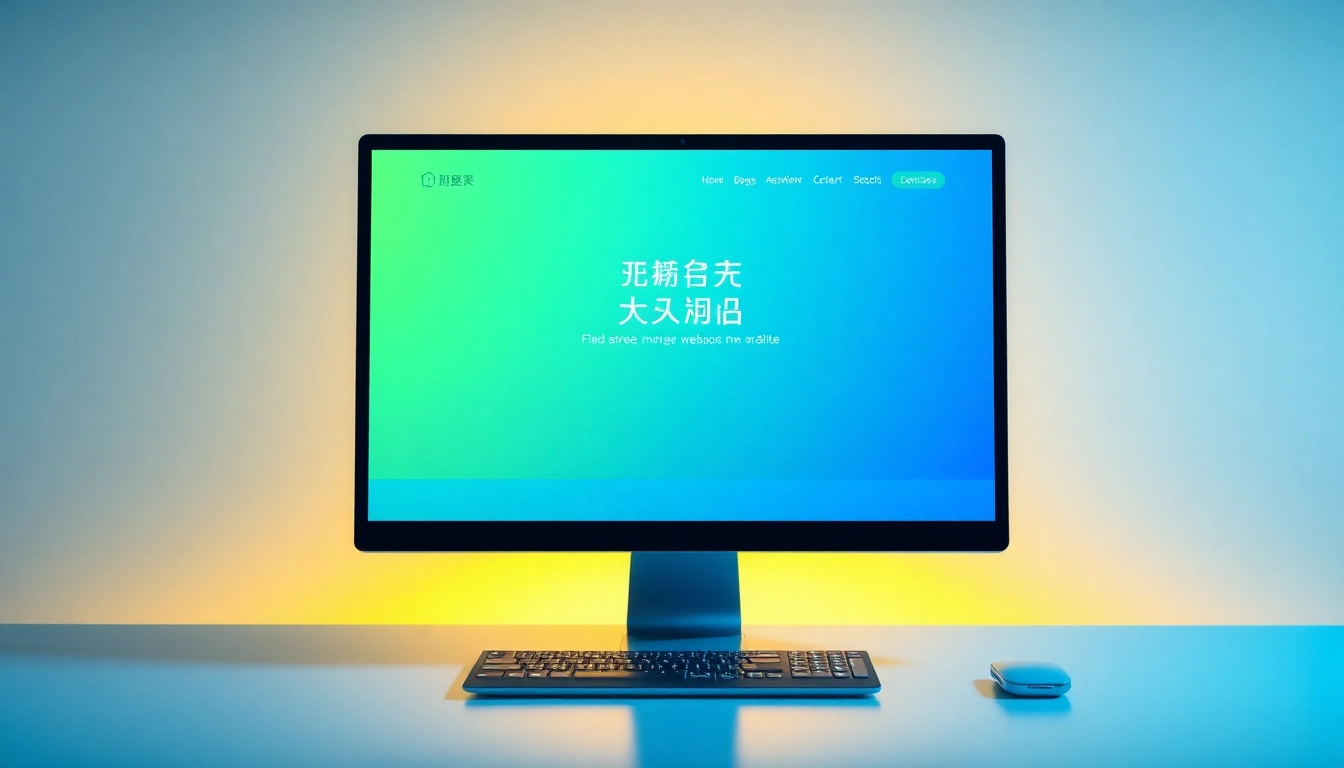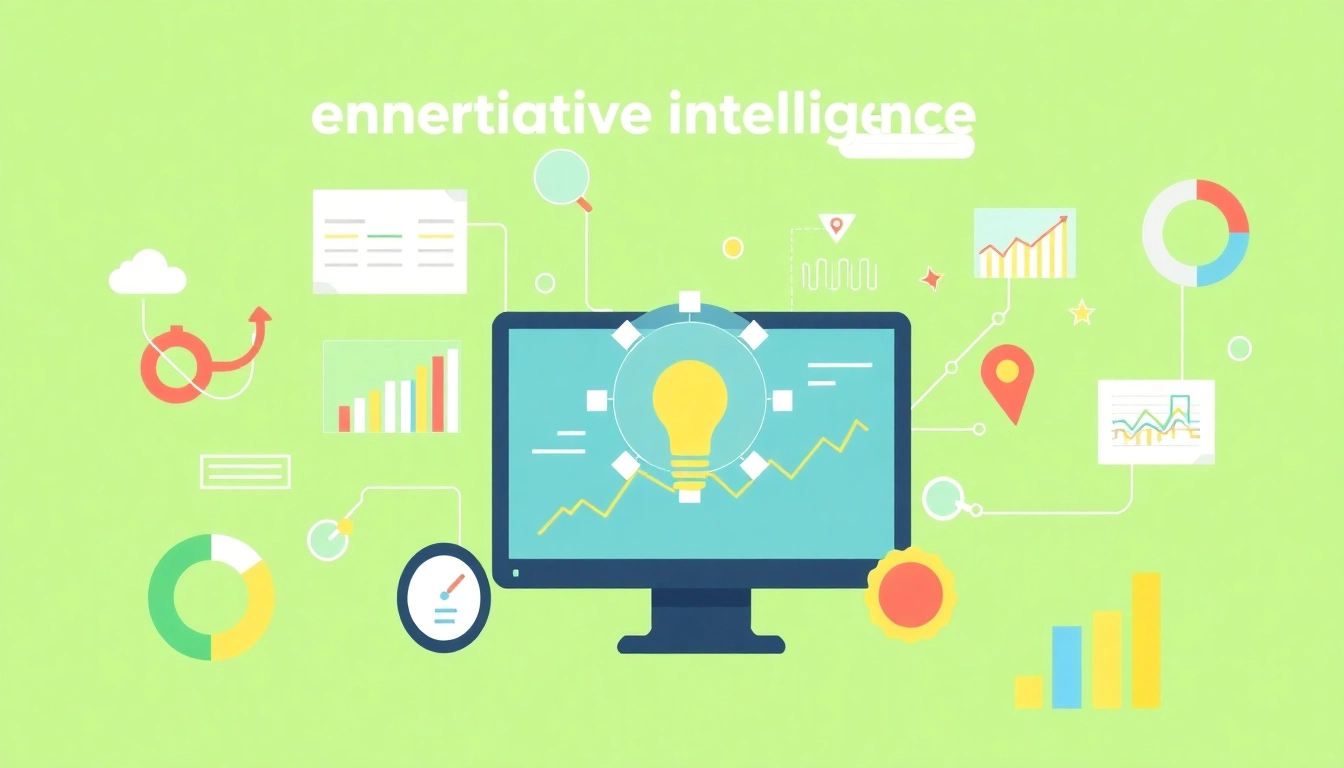Understanding Competitive Intelligence Services
In today’s rapidly evolving market landscape, businesses must constantly adapt to maintain their competitive edge. Leveraging competitive intelligence services allows organizations to analyze their competition, identify market opportunities, and enhance their strategic decision-making. This article aims to provide an in-depth exploration of competitive intelligence, detailing its significance, methodologies, and the tools available to effectively implement it within your organization.
What is Competitive Intelligence?
Competitive intelligence (CI) refers to the systematic collection, analysis, and distribution of information about competitors and market trends. The objective is to support strategic decision-making by providing insights that can help organizations improve their market positioning. Unlike mere data gathering, CI encompasses comprehensive analyses of a competitor’s strengths, weaknesses, and overall market performance. It often involves a blend of qualitative and quantitative research methods, including interviews, surveys, and data mining.
Importance of Competitive Intelligence in Business
The significance of competitive intelligence in business cannot be understated. Companies that leverage CI effectively are better positioned to:
- Enhance their market strategies by identifying emerging trends.
- Understand their competitors’ strengths and weaknesses, aiding in strategic positioning.
- Mitigate risks by anticipating market shifts and competitor movements.
- Facilitate innovation by identifying gaps in the market that competitors are not addressing.
- Optimize resource allocation and investment strategies, ensuring that budgets are focused where they can yield the highest returns.
How Competitive Intelligence Differs from Market Research
While competitive intelligence and market research share some similarities, they serve distinct purposes. Market research primarily focuses on understanding consumer needs and preferences, encompassing methods such as surveys and focus groups. In contrast, CI is more focused on analyzing the competitive landscape, monitoring rivals, and tracking industry benchmarks. CI integrates data gained from market research but emphasizes actionable insights about competitors that can directly influence a company’s strategy.
Key Components of Competitive Intelligence
Data Collection Techniques
Understanding effective data collection techniques is vital for successful competitive intelligence initiatives. These methods can include:
- Primary Research: This involves gathering data directly from sources through interviews, surveys, and focus groups. Engaging with customers and industry stakeholders can provide insights that secondary research cannot.
- Secondary Research: This includes the analysis of existing data from reports, articles, and websites. Utilizing online databases, competitor websites, and social media can yield valuable information on competitor activities.
- Open-Source Intelligence (OSINT): This refers to collecting information from publicly available sources such as news articles, press releases, academic papers, and industry publications. OSINT is an ethical way to gather intelligence, as it avoids invasive methods.
- Environmental Scanning: Continuously monitoring external factors affecting the industry, such as regulatory changes and economic trends, is crucial for adapting competitive strategies.
Analysis and Reporting Methods
Once data is collected, analyzing this information is critical. CI analysis often employs several methodologies, including:
- SWOT Analysis: This framework helps identify the strengths, weaknesses, opportunities, and threats associated with competitors.
- Porter’s Five Forces: This model allows businesses to understand the competitive dynamics within their industry by examining five key forces that shape competition.
- Benchmarking: This process compares specific metrics against industry standards or competitors, helping organizations spot performance gaps and set improvement goals.
- Data Visualization Tools: Utilizing visual tools like dashboards and graphs can enhance the comprehension of complex data findings.
Effective Tools for Competitive Intelligence
Several tools and software solutions can aid in streamlining the collection and analysis of competitive intelligence:
- SimilarWeb: An excellent tool for website traffic analysis and competitive benchmarking.
- BuzzSumo: This tool helps analyze content performance across platforms for understanding what resonates most with audiences.
- SEMrush: A powerful ally for keyword research and tracking competitors’ SEO strategies.
- Crimson Hexagon: Leveraging AI to analyze consumer sentiment and social media presence against competitors.
- Tableau: A data visualization tool that allows for the intuitive presentation of data findings, making it easier to communicate insights to stakeholders.
Implementing Competitive Intelligence in Your Organization
Step-by-Step Guide to Integration
Integrating CI into your organization involves a strategic approach:
- Define Objectives: Identify what specific information you need to gather about your competitors and how it can inform your strategic goals.
- Build a Collection Plan: Develop a plan that outlines the data sources, methods, and tools to be used in your CI efforts.
- Select CI Tools: Choose the right tools that fit your organization’s needs and budget for collecting and analyzing data.
- Gather Data: Implement your collection plan and start gathering primary and secondary data according to your defined objectives.
- Analyze Data: Use appropriate analytical methods to transform raw data into meaningful insights.
- Report Findings: Create clear, actionable reports that can be shared across your organization to inform strategic decisions.
- Review and Revise: Continuously evaluate the effectiveness of your CI process and update your strategy as needed.
Setting Up a Competitive Intelligence Team
Establishing a dedicated team is crucial for effective CI:
- Identify Key Players: Determine which departments will contribute to CI efforts, including marketing, sales, and product development.
- Define Roles and Responsibilities: Assign specific roles to team members based on their skill sets, ensuring alignment with CI objectives.
- Encourage Collaboration: Foster a culture of knowledge sharing between departments to enrich intelligence efforts and insights.
- Provide Training: Equip team members with the necessary skills related to data analysis, tools, and ethical considerations in CI.
Best Practices for Maintaining Intelligence Activities
To ensure ongoing success in CI, consider the following best practices:
- Regularly Update Intelligence: Make it a habit to review and refresh your CI information periodically to keep it relevant.
- Utilize a CI Framework: Establish a structured framework that guides your intelligence efforts, helping to maintain consistency.
- Measure Effectiveness: Implement KPIs that gauge the impact of competitive intelligence on decision-making and strategic outcomes.
- Stay Ethical: Always practice ethical intelligence gathering, abiding by legal guidelines to differentiate your efforts from espionage.
Case Studies: Success through Competitive Intelligence
Industry Leaders Effectively Using CI
Several companies have successfully integrated CI into their strategies, achieving significant results:
- The Coca-Cola Company: Coca-Cola uses CI to monitor its competitors’ marketing strategies and consumer preferences, enabling it to adjust its own campaigns and product offerings.
- Apple: Apple invests heavily in competitive intelligence to identify emerging technology trends, allowing them to stay ahead in the tech industry.
- Netflix: By analyzing viewer behavior and competitive offerings, Netflix leverages CI to tailor their content and marketing strategies, leading to substantial growth in subscriber numbers.
Lessons Learned from Failed Competitive Intelligence Strategies
However, not every CI initiative leads to success. Companies like Blockbuster failed to utilize competitive insights effectively, underestimating the threat posed by emerging streaming services like Netflix, resulting in their decline. The key takeaway here is the necessity for organizations to act on insights gathered through CI actively and not neglect competitor developments.
Measuring Success: KPIs for CI
Establishing key performance indicators (KPIs) is essential for gauging the success of your CI initiatives:
- Market Share Growth: Tracking changes in market share can indicate the effectiveness of competitive strategies informed by CI.
- Sales Performance: Analyzing sales data before and after implementing CI-driven strategies can help evaluate impact.
- Competitive Positioning: Use brand perception surveys to assess shifts in how your company is viewed relative to competitors.
- Customer Retention Rates: Improved retention rates post-CI implementation can signal successful adaptation to market dynamics.
Future Trends in Competitive Intelligence Services
Technological Advances Shaping CI
As technologies evolve, so does the field of competitive intelligence. Emerging trends include:
- Artificial Intelligence (AI): AI tools are becoming increasingly utilized in CI to analyze vast amounts of data quickly and accurately.
- Machine Learning: This technology facilitates predictive analytics, allowing companies to forecast competitor actions and market changes more effectively.
- Natural Language Processing (NLP): NLP applications can help extract actionable insights from unstructured data such as customer reviews and social media posts.
Ethical Considerations in Competitive Intelligence
As organizations navigate the complexities of CI, ethical considerations must be prioritized. It’s crucial to adhere to legal boundaries and respect competitors’ privacy while gathering information. Building a robust ethical framework will not only protect your company but also enhance its reputation in the market.
Preparing for Evolving Market Dynamics
Finally, staying ahead in competitive intelligence requires continuous adaptation. Businesses should remain vigilant in monitoring shifts within their industry, including changes in consumer behavior and regulatory landscapes. By creating a flexible CI strategy that can be adjusted based on real-time data, companies will be well-positioned for long-term success.



